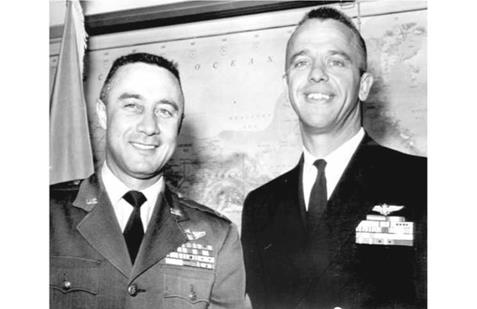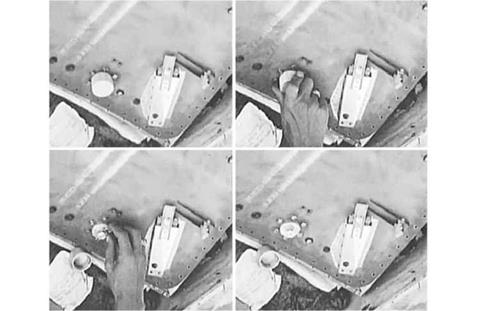FIRST TO FLY
As the first months of 1961 passed, most of Grissom’s attention was centered on the forthcoming suborbital flight of Alan Shepard for which he was the backup pilot. He stood ready to take over the role of prime pilot in the event that Shepard was unable to fulfill that role. In addition to assisting Shepard throughout the preparations for the flight, Grissom worked with him through the various delays that plagued the MR-3 launch.
On 5 May 1961 it all came together for NASA when Shepard became the first American to be launched into space on a suborbital trajectory, thereby confirming – albeit briefly – that a human being could not only survive the dynamics of launch and reentry, but work without any physiological hindrance in weightlessness. His Freedom 7 capsule came through the 15-minute flight with flying colors, and the Redstone booster performed with its renowned reliability.
“We all pulled together on that one,” Grissom later wrote, “just as we do on all our flights, and I stuck pretty close to Al until he went up. I was with him when he dressed, and I rode out in the van with him to the pad. After that flight I buckled down to my own problems and stayed near my own capsule as much as I could.”8
Approximately 60 days prior to the MR-4 mission, with the launch tentatively set for mid-July, Grissom began specific preparation for the flight, and his experiences during this lengthy buildup period would eventually shape the pattern of his actions and responses during the flight. During this period he mostly stayed at the nearby Holiday Inn in Cocoa Beach so as to closely follow the preparation of the capsule and booster at the Cape, flying home briefly each weekend to visit Betty and their two boys. He participated in countless systems checks carried out in the Hangar S test
|
|
Both in dress uniform, Grissom stands alongside America’s first man in space, Alan Shepard. (Photo: NASA)
|
|
Clockwise from top-left, this sequence shows the astronauts’ procedure for firing the explosive hatch. The first photo shows the knurled knob that had to be turned and removed (as seen in the second image) to reveal the plunger. And once the pin had been removed, the plunger was ready to be depressed with a solid push. (Photos: McDonnell Douglas)
facility, and most of his waking hours were spent going over every component again and again with McDonnell and NASA engineers and scientists assigned to the test.
“It’s good for them to know that the guy who is going to ride it is around,” Grissom commented of this period, echoing his earlier philosophy on working alongside the McDonnell people while Spacecraft No. 11 was being assembled in St. Louis.9 He also took up jogging along the beach in order to keep himself in good physical trim and mentally run through any mission-related issues. As a precaution against sustaining any disqualifying injuries, he temporarily gave up his favorite sport of water-skiing, and moderated his driving speed to stay with lawful limits.












